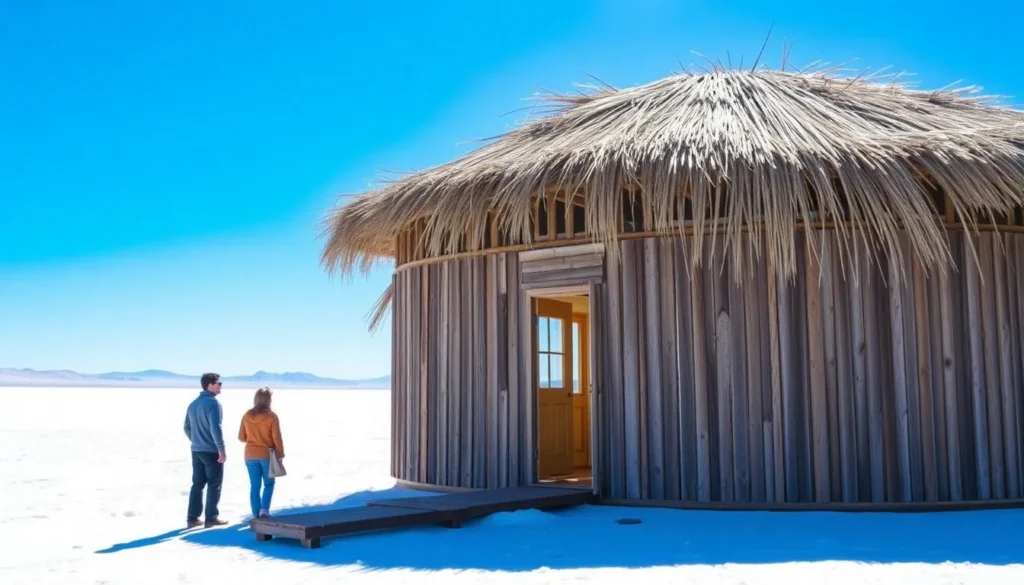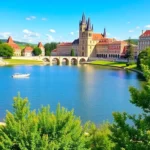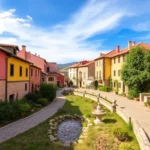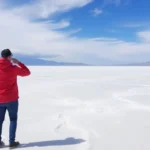3-Day Uyuni Salt Flat Tour: Our Experience

Embarking on a journey to Bolivia without experiencing a three-day tour of the Salar de Uyuni is akin to seeing a magnificent painting with its colors washed out. This breathtaking salt flat, often described as otherworldly, is a dream destination for many travelers. In this guide, we will share our unforgettable experience exploring this incredible landscape, providing essential information on how to visit the Salar de Uyuni, where to book your tour, what sights to expect, and helpful tips to prepare for your adventure.
If you’re questioning whether this journey is worth it, we must admit: the answer is a resounding YES! The magic of Uyuni has left us yearning for more, and we can't wait to return.
Stepping onto the crunchy salt crust of this vast desert, situated at over 4,000 meters above sea level, fulfills a collective dream for many adventurers. It’s undeniably a unique destination, featuring expansive plains of salt, but it also hides countless surprises, such as a remote island adorned with centuries-old cacti.
While the tour is named after the salt flat itself, the journey offers much more—landscapes that will make you feel as if you’ve landed on another planet. The natural beauty of South America is truly unmatched.
Curious about what awaits you on this three-day tour of the Salar de Uyuni? Let’s dive in!
Day 1: The Salar of Uyuni
The adventure begins at dawn: after an overnight bus journey* (note: if you're traveling in winter, prepare for chilly conditions; we arrived to find our bus windows frozen), we enjoyed breakfast and met Soraida from the Inti Raymi agency, with whom we booked our tour.
* The recommended bus companies for travel between La Paz and Uyuni are Titicaca (the one we took), Todo Turismo, or Panasur. The fare is around 120-140 Bs. It’s best to visit the La Paz Bus Terminal a few days prior to your trip to secure your ticket with a company you trust.
After breakfast, we were escorted to our hotel, the Hotel Rustico Casona de Sal, located in the town of Uyuni and constructed from bricks made of salt from the Salar. Soraida informed us that, as our group was small, we would be joining another agency’s group (shared tours are significantly more affordable than private ones). She assured us that everything would go as planned, and indeed, everything was perfect.
After a brief rest, around 10:00 AM, we met our guide and driver, Santos (a photography enthusiast), and the rest of our group, which included some lovely travelers from Ecuador (Fabiola, Andrés, and Yandri) and a friendly German girl named Damaris. We hopped into the jeep and set off on our adventure!
What to See in the Salar de Uyuni
The first day was absolutely fantastic, focused on exploring the breathtaking Salar de Uyuni, Bolivia's star attraction. The circular route begins and ends in Uyuni, although sometimes, to save on distance, the tour might stop for the night in a smaller town like Ajencha. The key stops of the day included:
- Train Cemetery: Capture stunning photos amid the remnants of old trains that once transported minerals to Chile in the 19th century. This salt flat has been (and continues to be) a significant revenue source for the country, yielding not just salt but valuable minerals like potassium, magnesium, and lithium—the largest reserve globally (have you heard of the Lithium Triangle?).
- Colchani Indigenous Community: Observe how iodized salt is processed for sale, and feel free to spend a few bolivianos at the local souvenir shop. 😉
- Pools of water, salt hotel, flags, and Dakar monument: This area features fascinating small water pools; we also encountered the Dakar rally monument (amazed at how this event was allowed), visited the first hotel constructed of salt, and snapped selfies with the flags monument.
- The Salar: We stopped at a section of the desert filled with crystallized salt forming hexagonal shapes. Here, we enjoyed a delicious meal and seized the opportunity for those classic fun perspective photos. Don’t worry, the driver carries some dinosaur props for your photo shoot (ours was top-notch, even choreographing a fun routine that you can see in the Instagram stories from our trip).
- Incahuasi Island: This magical site is a volcanic mountain that seems to rise from the Earth's heart, covered in thousands of ancient and towering cacti, some over 10 meters tall!
- Sunset: The day concluded in a part of the salt flat where, depending on the season, a thin layer of water creates a gigantic natural mirror. We toasted with a glass of wine as the sun set on the horizon, surrounded by the Salar covered in water, resembling an endless ocean just a few centimeters deep. It was one of the most incredible moments of our lives.
Day 2: On the Way to Eduardo Avaroa National Reserve
We woke up well-rested and, after showering and enjoying breakfast, set off toward the Eduardo Avaroa National Reserve, a realm of lagoons, volcanoes, bizarre rock formations, and landscapes resembling another planet.
Unfortunately, we faced less-than-ideal weather conditions, as the day began with STRONG winds and a significant chill. A reminder for those traveling in winter: pack thermal clothing and layer up!
What We Saw Along the Way
Unlike the previous day, today we departed from Uyuni and would spend the night near the Eduardo Avaroa Reserve, close to the Chilean border, in basic accommodations where we experienced a bone-chilling -17 degrees Celsius! While blankets were provided, it’s wise to bring a good sleeping bag (especially if your room has windows with gaps!). Here’s what we encountered on our route:
- San Cristóbal: One of the largest towns in the area, we savored the best salteña of our trip at its local market. Additionally, there are a few restaurants and shops for last-minute purchases, as well as the unique San Cristobal Lipez Church.
- Flamingo Lagoon: A breathtaking landscape surrounded by volcanoes and numerous lagoons populated with dozens of pink Andean flamingos. Among the three species inhabiting the area is the James' Flamingo, a species unique to this region.
- Stone Tree: A curious rock formation resembling a tree, located in the Siloli Desert. The highlight for us was spotting adorable vizcachas—super cute and fluffy rodents living among the rocks.
- Otherworldly Landscapes: We crossed areas filled with alpacas, vicuñas, snow-capped mountains, and winding streams. It’s not just a single spot but the array of stunning landscapes that make this journey so memorable. Ensure your camera battery is fully charged—you’ll need it!
- Red Lagoon: This was our official entry into the Eduardo Avaroa Reserve. It’s meant to have red hues (hence the name), but due to the wind, it appeared more gray during our visit (the photo is stock). The wind also brought frigid temperatures, nearly prompting us to reenact Mary Poppins without an umbrella!
Day 3: Exploring the Eduardo Avaroa National Reserve
The third day of our tour began with an early wake-up call following a rather peculiar night. Thankfully, we were snug under four thick blankets, well bundled up, while our companions endured their night in a shared dorm with broken windows—imagine their discomfort! We emphasize that it’s worth paying a little extra for a private room with proper windows.
What to See in the Eduardo Avaroa Reserve (and Surroundings)
This day was undoubtedly the most exhausting, as we set out in the early morning and returned to Uyuni just as the last rays of sunlight faded. The fatigue from the journey was palpable, and although a soak in the hot springs was rejuvenating, we arrived back with our energy reserves depleted. Here are the highlights from our final day:
- Morning Sun Geysers: We kicked off the day very early, around 5:00 AM, to witness the geysers at sunrise. It was worth the effort; the setting is spectacular! Note: this geothermal field is located at around 4,800 meters above sea level, so it’s advisable to acclimatize before venturing to the Salar de Uyuni, as altitude sickness is no joke.
- Green Lagoon: This is one of the most breathtaking stops on the Uyuni tour, situated at an altitude of about 4,350 meters. Unfortunately, the cold and strong winds diminished its charm, and we could only brave the outdoors for a few minutes to take photos.
- Dalí Desert: This area is so surreal that it seems from another world. Colorful mountains and rock formations that could easily be from a painting by the artist Dalí are scattered throughout, alongside numerous volcanoes.
- Polques Hot Springs: Only Rober and Damaris dared to strip down and immerse themselves in the warm waters of these picturesque hot springs. The rest of us, cautious of the cold, watched with envy but remained warmly bundled.
- Return Journey to Uyuni: More stunning landscapes unfolded as we traveled back, featuring fields populated with alpacas, vicuñas, and suris (the Andean ostrich), along with countless memories etched in our minds.
Don’t forget to book travel insurance with IATI to protect yourself from unexpected surprises. It’s better to be safe than sorry, no matter where you’re heading!
Frequently Asked Questions about the Salar de Uyuni
So far, we've shared our incredible experience on the Salar de Uyuni tour. As you can imagine, we loved every moment! Now, let’s address some common questions that might be swirling in your mind:
› Is the three-day tour of the Salar de Uyuni worth it?
At this point, are you still questioning whether it’s worth it? Absolutely! Everyone in our group agreed that while the first day was the highlight, the subsequent days were equally spectacular. Just be prepared for long hours in the jeep, which can be tiring.
› Only have one day? Is it worth traveling to Uyuni just to see the Salar?
Before our trip, we would have said no. But after spending a day there, we’re certain it’s worth it. The landscapes from the first day are unforgettable, and the sunset toast with wine is a memory you’ll cherish forever. So, if you have just one day, make the trip to Uyuni—it’s worth the effort!
› Can I take the tour from another city?
Yes, there are tours available from other major cities further away, lasting one or several days, which include transportation to the Salar and the jeep excursion, along with accommodations and meals. For example:
- Tour to Salar de Uyuni by night bus from Sucre
- Three-day excursion to Uyuni from La Paz
- Three-day circuit to La Paz and Salar de Uyuni from Puno (in Peru).
› What is included in the three-day tour of the Salar de Uyuni?
In our case, everything was included: accommodations in double rooms with private bathrooms, entry fees to attractions, meals, and transportation. However, this may vary; some of our companions paid less but had to cover entry fees to Incahuasi Island ($4), to Eduardo Avaroa Reserve ($22), and stayed in shared rooms. So, be clear about what you want.
› Need more tips for visiting the Salar de Uyuni?
In this article, we provide additional tips for visiting the Salar de Uyuni and cover everything you need to know about this incredible destination.
We hope our experience on the three-day tour of the Salar de Uyuni has inspired you and given you the final push to visit this crazy, incredible, unique, and extraordinary part of our planet.
For daily updates on our trip to Bolivia, check out our Instagram stories.
| Save on your trip |
| Find cheap flights to Bolivia here |
| Discover accommodations at the best prices here |
| Book activities in Spanish in Bolivia here |
| Get a 5% discount on your travel insurance IATI here |
| Reserve transfers from the airport here |
| Learn how to withdraw money without fees here |
| Get a 5% discount on your eSIM from Holafly here |
| Rent a car with the best deals here |
| The best books and travel guides here |
| All our articles about Bolivia |




Deja una respuesta